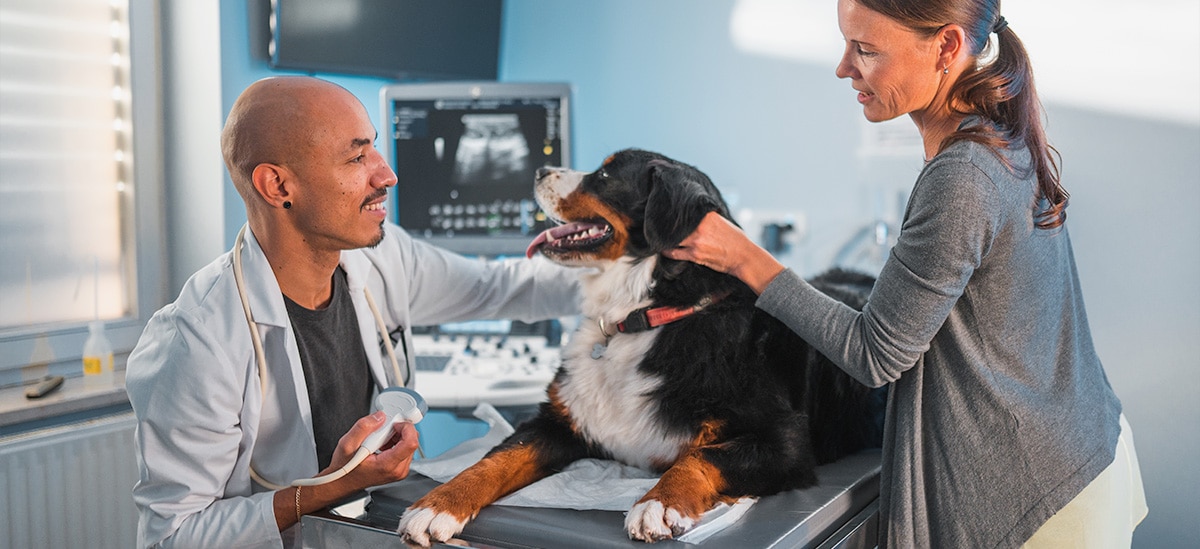
Another day, another must-have technology your practice is encouraged to acquire. At least, if you are a veterinarian, it may seem that way. Innovation moves ahead at a rapid clip, both in the treatment rooms and the front office. And, sometimes, if you don’t keep up with the latest trends, your hospital’s growth might be at stake.
New, advanced diagnostics allow you to treat patients better than ever. And, on the business side, Customer Relationship Management (CRM) platforms help drive patient satisfaction and keep your examining rooms full, while managing accounts receivables and payables to help improve cash flow.
There are only two hitches: How to afford these changes and how to make them yield a return.
“Veterinary practices today are like every business,” offers Nick Spanakis, head of PNC Bank’s healthcare business banking. “They face pressure to keep up with foundational changes sweeping the industry. When it comes to tech, it’s not enough to know what upgrades make sense. It’s also knowing the best ways to finance this uptick in capabilities to maximize profitability – not just the equipment purchase itself, but everything that goes along with it.”
The Hidden Costs of Upgrades
While every technology makes big promises for better patient outcomes and profitability, it’s important to look at the true costs of acquisition as well.
“Yes, there’s the cost of purchasing the equipment itself. Everybody understands that,” Spanakis points out. “But there are other costs that some never consider. For example, what construction needs to take place to accommodate new equipment? What skills are needed to operate that new equipment? Who receives training? And how disruptive will these improvements be in the short-term?”
These are all questions that should be factored in to make the smartest decision. Yet, it is easy to get swept up in the heat of the moment. With that in mind, looking at the entire costs of the new product and what it will take to get to implementation.
Sometimes it’s a straightforward term loan. Sometimes the needs are a good deal more complex, requiring a mix of term loans and lines of credit. And just as no two veterinary practices are the same, no two lending facilities are the same either.
Expertise Matters
If you are weighing upgrades, it’s crucial to have the right team available to weigh the pros and cons behind any acquisition. Spanakis offers that it’s not just financial expertise that matters, but the highly specific knowledge required to make a veterinary hospital successful.
“At PNC, we have an entire group of professionals who specialize in healthcare banking solutions, and we have a special affinity for veterinarians and their unique business opportunities and challenges.”
For example, beyond the realm of clinical or client contact, real estate is a dimension when it comes to evaluating tech upgrades. Will you need to expand or renovate to accommodate new capabilities such as dental equipment or a new X-Ray? How will any change to the office footprint affect other profit centers such as boarding and grooming? These are questions we already know to ask.
In other words, a strong banking relationship is a major asset. Not just with any business banker, but one who knows the ins and outs of practice management who can help keep the practice in a good financial position. Spanakis offers insights on the specific metrics any practice should consider before making the investment.
“When it comes to acquiring technology, the first thing we look at is a practice’s return on investment (ROI). We ask questions such as, ‘How many additional patients will this bring into the clinic? How much training is required? Will the revenue projections outstrip the potential costs?’ We not only can structure more flexible lending than, say, an equipment manufacturer, but we can offer industry insights to help a veterinarian decide if this upgrade is a smart business move at all.”
The Earlier The Better
If you are contemplating a major upgrade in capabilities, Spanakis cautions, planning is everything.
One scenario that arises often is when a client had committed to an equipment purchase without first really thinking about the overall business case. For example, before signing a purchase agreement, it’s important to already know the impact any new equipment will have on your overall operations.
That means thinking less tactically and more strategically. In addition to your business banker, you should rely on your bench of experts for advice. Your attorney, accountant, and other trusted voices should be consulted to not just rubber stamp your plans, but seek out the flaws, too.
“We find that the earlier in the process we are involved, the more successful a technology acquisition can be. For example, we can look at how you currently schedule patients, how your receivables are looking, and what the competitive landscape is like. Then, taking all that into account, your advisers can provide an objective look at what shape your technology strategy might need to take.”
Innovation Begins With Evaluation
So, if you are ready to improve the health of your patients—not to mention your bottom line—your critical first step is to make sure these technology moves are part of a well-conceived business plan. Spanakis believes almost all success stories begin that way.
“Time and again, we’ve found that the most prosperous veterinary clients are the ones who not only take the time to develop a good plan for the future, but bring others into the planning stage, too. Chances are, the sooner we’re brought into the discussion, the better the outlook will be.”
Is an upgrade in technology the right move? Our teams of specialists can help with the knowledge and experience to increase your chances for success. Regardless of what you plan, we can provide the business savvy you need to get your pet project off the ground.




